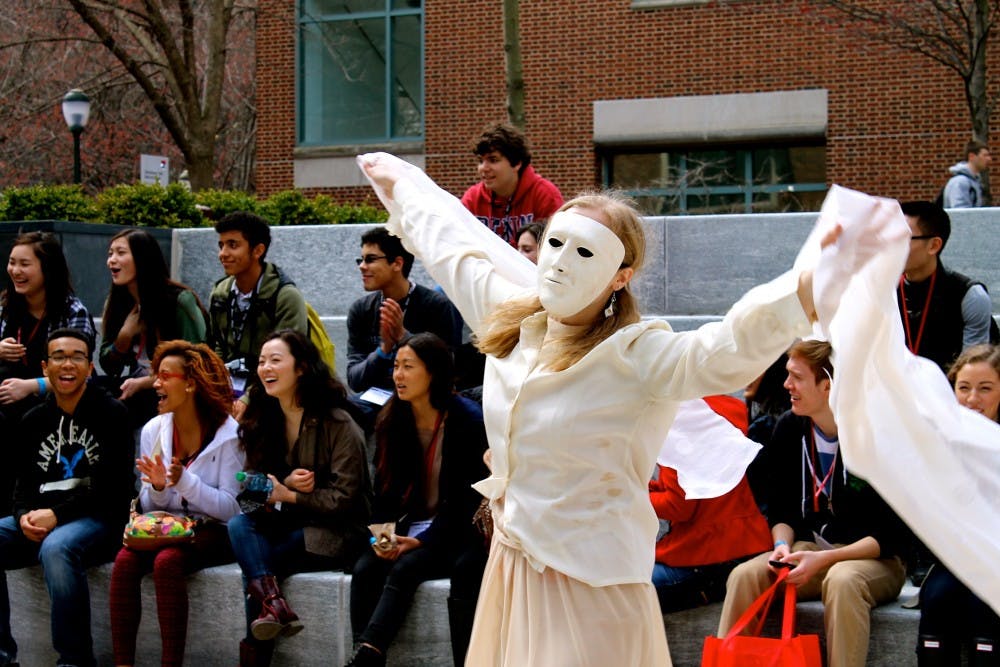The students of Jim Schlatter’s class, “Taking Performance Art Public at Penn,” are learning to think outside the picture frame.
The course is a freewheeling interdisciplinary look into the intersection of art making and community engagement with public space, Schlatter said. It involves analyzing the work of famous modern performance artists like Ai Weiwei and Marina Abramovic.
A self-described “old-time bohemian,” Schlatter’s lifelong love of cities and “the wisdom of the streets” led to his idea for the course, which is in its first year.
“We have lost the sense of gathering together in physical and public space, so a lot of this is reigniting the sense that we are all in this together,” he said.
He believes art, especially the kind that engages the community, is a way to address the alienation of the modern experience, something he believes is especially necessary at Penn and in West Philadelphia.
“We kind of live in a compartmentalized way at Penn,” Schlatter said. “Locust Walk is kind of the parade of self display.” However he pointed out that even small things like the lights that go up in winter on Locust Walk affect the spirit of a public space.
“It’s a small little difference, but it’s a sparkle of hope,” he said. “The environment does have an impact.”
“We all came into this with different notions about what public performance art was,” College sophomore Rebecca Somach said. She is one of only three students in the course, a fact which allows debate and discussion between students and Schlatter.
“My favorite thing about the class is we didn’t really know where this was going to go,” College senior Trevor Pierce said. “Each class ends with, ‘So what’s next?’ and that’s so liberating. It’s so refreshing.”
The class even created a “Magical Mystery Tour” for admitted freshmen during Quaker Days, which involved audience participation and masked performers to make the normally “passive” tour more interactive. “We wanted to make the tour theirs, that they’re discovering Penn ... [in] surprising and funny and nonchalant kinds of ways,” Schlatter said.
Schlatter hopes that next year he will be able to make the course more community-oriented in partnership with the Netter Center for Community Partnerships and the Benjamin Franklin Scholars program. If he can secure funding, Schlatter is aiming for his students to open a “pop-up” community center in West Philadelphia that serves as a public gathering space for art.
He sees the revolutionary nature of public performance art in its democratic possibilities for creating “micro-utopias.”
“Those who were previously the spectators are now the creators,” he said. “We’re not trying to change the world. We’re not trying to start a revolution. All we want to do is create these sorts of wonderful experiences.”



